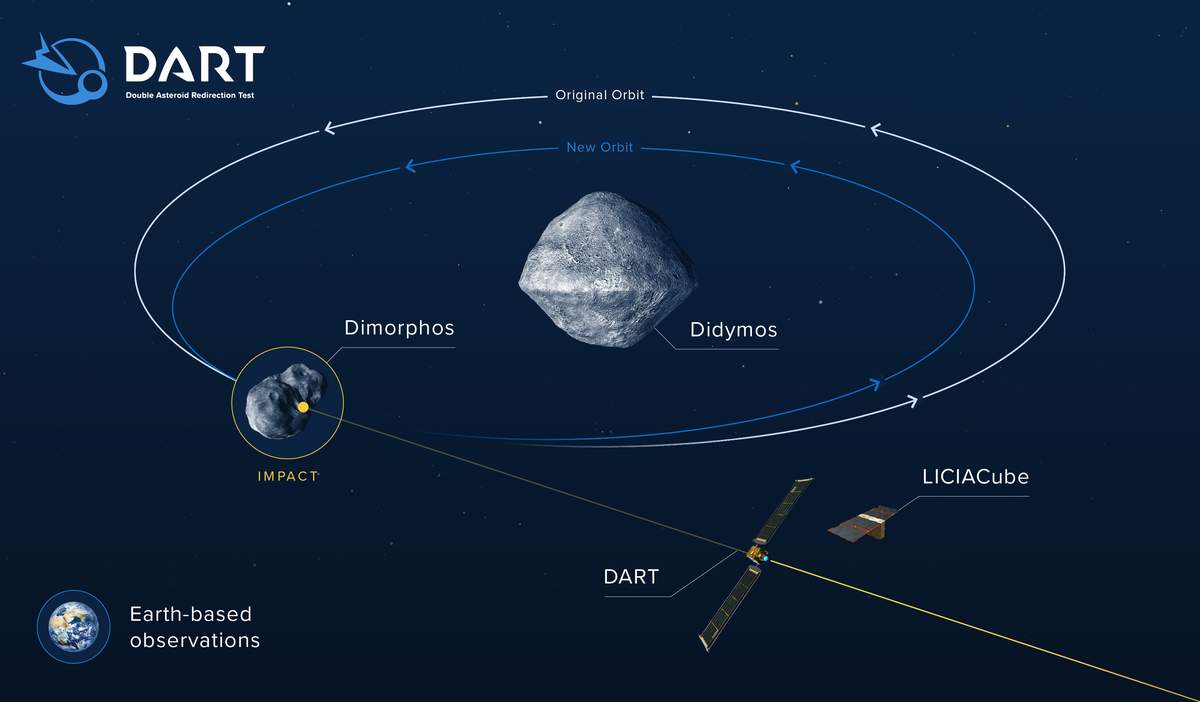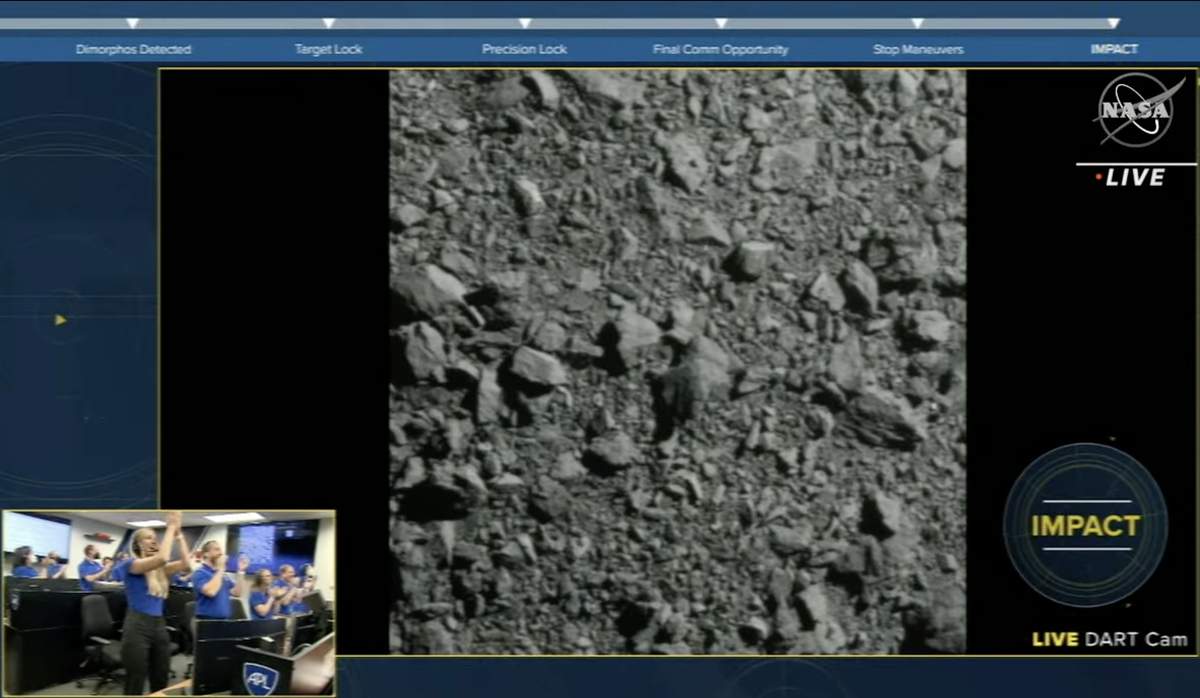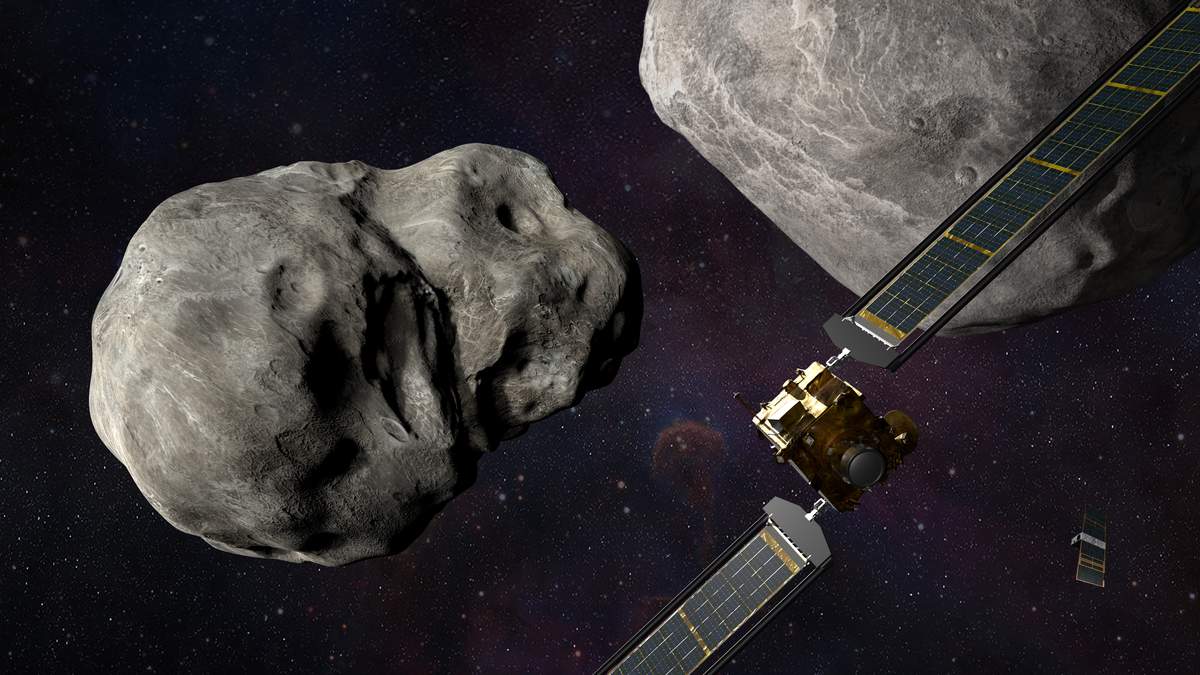Yesterday, NASA crashed a spacecraft into an asteroid on purpose. The mission was meant to test a method for possibly changing the path of an asteroid. Knowing how to do this could be helpful in the future if an asteroid is heading toward Earth.
NASA’s mission is called DART, which stands for Double Asteroid Redirection Test. The mission was launched in November of last year. Since then, it has been traveling roughly 6.8 million miles (11 million kilometers) to reach a pair of asteroids in outer space.

(Source: YouTube.)
Asteroids
Asteroids are large rock-like chunks of material that never quite formed into a planet. Most of them are found in the asteroid belt, between Mars and Jupiter, and follow stable orbits. NASA says that there are over 1,113,500 asteroids that scientists know about.
“There are no known asteroid threats to the Earth” for any time in the near future, says Nancy Chabot, one of the lead scientists for the DART project. But NASA wants to be prepared.
There aren’t many asteroids as large as the one that helped wipe out dinosaurs over 65 million years ago. But even a much smaller asteroid could cause serious damage if it struck a city on Earth. To protect the Earth in such a situation, NASA wanted to test a way of changing an asteroid’s path – by smashing something into it.

(Source: NASA /Johns Hopkins APL.)
DART’s target was an asteroid called Dimorphos. It’s about 175 yards (160 meters) in diameter. Dimorphos circles around a larger asteroid called Didymos as the two travel together through space. NASA is trying to see if it can shove Dimorphos closer to Didymos.
Because the asteroids are so far away, the spacecraft had to be able to guide itself to the target. DART focused on the larger asteroid, Didymos, until it got close enough to see Dimorphos. Then it focused on Dimorphos, crashing into it at about 14,000 mph (22,500 kph). DART sent back pictures until the moment it crashed.

(Source: YouTube.)
How Will They Know If It Worked?
DART carried a tiny spacecraft called LICIACube with it. LICIACube, which was created by the Italian Space Agency, was following behind DART.
LICIACube’s task was to record the crash – and what happens afterward – and send the information back. This is the first time a small “cube satellite” has been used in this way. But it could take weeks for the images from LICIACube to reach Earth.
NASA scientists expect Dimorphos to move closer to Didymos. Before DART, it took Dimorphos 11 hours and 55 minutes to orbit the larger asteroid. After the crash, Dimorphos is expected to move slightly closer to Didymos, and to orbit a few minutes more quickly.

(Source: NASA /Johns Hopkins APL/Steve Gribben.)
Telescopes on Earth, as well as powerful telescopes in space, will be helpful in seeing if the orbit actually changes. In 2024, the European Space Agency plans to launch a new spacecraft to Dimorphos to gather more information.
NASA showed the event live over the internet. Cheers broke out at NASA as DART smashed into Dimorphos and the images from the spacecraft suddenly ended. Scientists around the world are hoping that this first test of a “planetary defense system” will teach them important lessons that could help protect the Earth in the future.
Did You Know…?
If you would like to watch DART’s final seconds before striking Dimorphos, you can see them in this NASA video on YouTube.
